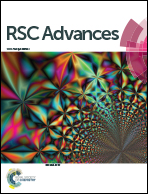The degradation of azo dye with different cathode and anode structures in biofilm electrode reactors
Abstract
In this study, biofilm electrode reactors (BERs) were constructed to degrade the azo dye Reactive Brilliant Red (RBR) X-3B. Three different BERs, namely, cathodes with differently structured reactors, cathodes filled with a granular activated carbon (GAC) reactor, and a dimensionally stable anode (DSA) electrode anode reactor, were individually studied to investigate their influence on the removal of both X-3B and chemical oxygen demand (COD). Experimental results showed that it was the internal resistance rather than the total surface area of the cathode that influenced the X-3B removal efficiency in the different cathode reactors. The smaller the internal resistance, the larger the current in the reactor. The larger the current in the whole system, the more electrons that could be utilized for the reduction of X-3B, resulting in higher removal efficiency. The cathode filled with a GAC-BER did not improve the COD removal efficiency, while the X-3B removal efficiency actually declined. Using the DSA electrode as an anode increased the current in the system and improved the removal efficiency. Scanning electron microscopy results showed that the DSA electrode anode had a longer service life than a graphite anode. UV-vis spectral analysis determined that the conjugate system in X-3B was destroyed.



 Please wait while we load your content...
Please wait while we load your content...